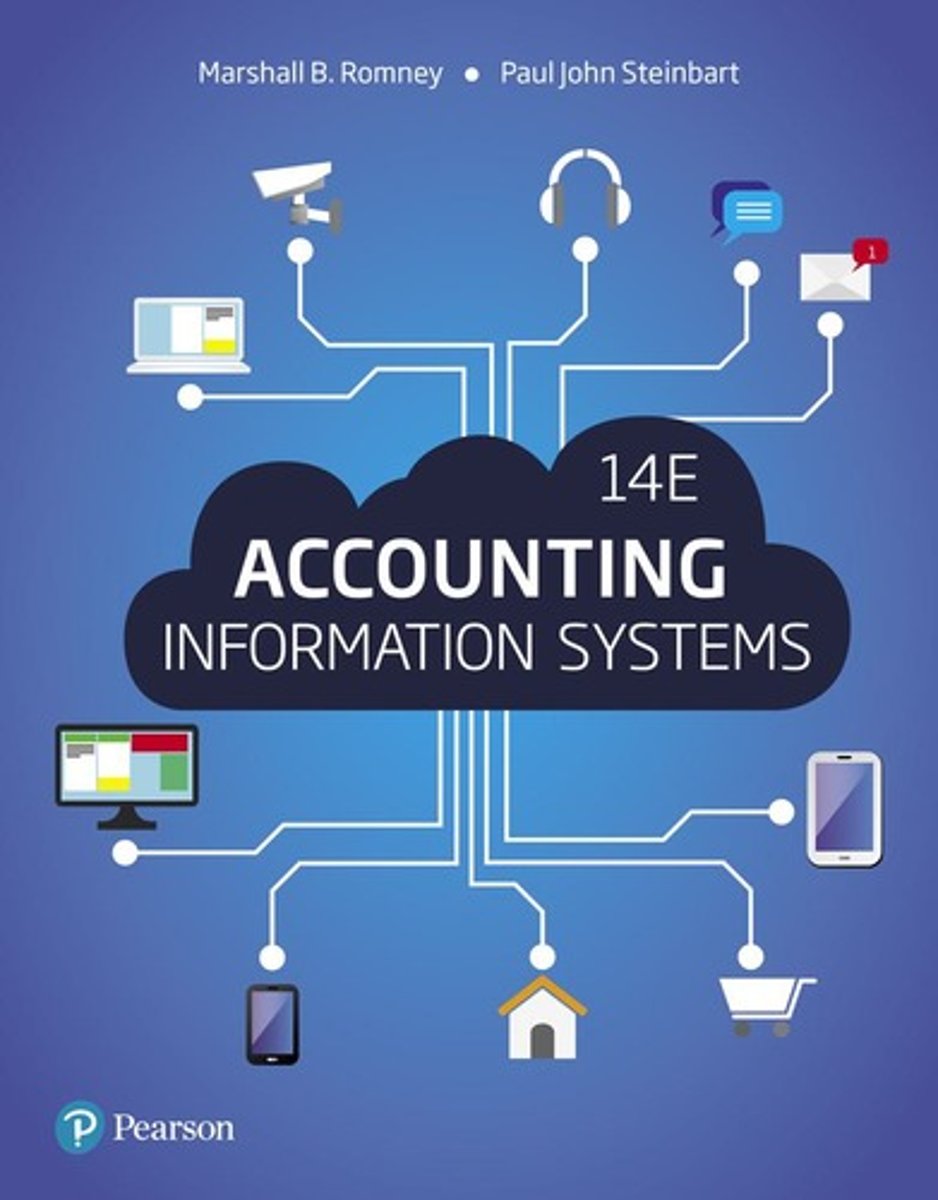Accounting Information Systems and Transaction Processing Overview
1/71
Earn XP
Description and Tags
AIS chapter1 &2
Name | Mastery | Learn | Test | Matching | Spaced |
|---|
No study sessions yet.
72 Terms
Data
Facts collected, recorded, and stored in the system.
Information
Organized data that is meaningful within a context.
Decision Quality
The effectiveness of decisions made based on information.
Information Technology (IT)
Used to help decision makers filter and condense information.
Value of Information
The benefits of information exceed the costs of gathering, maintaining, and storing it.
Relevant Information
Information needed to make a decision.
Reliable Information
Information free from bias.
Complete Information
Information that does not omit important aspects of events or activities.
Timely Information
Information provided in time to make the decision.
Understandable Information
Information presented in a meaningful manner.
Verifiable Information
Information that can be independently confirmed by two people.
Accessible Information
Information available when needed.
Business Process
A set of related, coordinated, and structured activities and tasks performed to achieve a specific organizational goal.
Invoice Date
The date on which an invoice is issued.
Invoice Number
A unique identifier for an invoice.
Customer
The entity that receives goods or services.
Item Number
A unique identifier for a specific item.
Quantity (Qty)
The amount of items sold or purchased.
Price
The cost of a single item.
Total Invoice Amount
The total cost of all items listed on the invoice.
Information Overload
Too much information that can reduce decision quality.
A/R Aging Report
A report that provides information on customer balances.
Business transaction
An agreement between two entities to exchange goods, services, or any other event that can be measured in economic terms by an organization.
Transaction data
Data used to create financial statements, referred to as transaction processing.
Give-get exchange
The fundamental interaction in business processes where one party gives something to receive something in return.
Revenue cycle
A basic business process where goods or services are given in exchange for cash.
Expenditure cycle
A basic business process where cash is given in exchange for goods or services.
Production cycle
A basic business process where labor and raw materials are given to receive finished goods.
Payroll cycle
A basic business process where cash is given in exchange for labor.
Financing cycle
A basic business process where cash is given in exchange for cash.
Accounting Information System (AIS)
A system that collects, records, stores, and processes data to produce information for decision makers.

Components of AIS
Includes people who use the system, processes (procedures and instructions), technology (data, software, and information technology), and controls to safeguard information.
Value chain
Links together different activities within an organization that provide value to the customer.
Primary activities
Activities in the value chain that provide direct value to the customer.
Support activities
Activities that enable primary activities to be efficient and effective.
Supply chain
An extended system that includes the organization's value chain as well as its suppliers, distributors, and customers.
Goal conflict
A situation where the goals of different stakeholders in an organization are in opposition.
Goal congruence
A situation where the goals of different stakeholders in an organization align and support each other.
Transaction
An individual occurrence of a business event that is recorded in the AIS.
Transaction processing
The method of collecting, storing, and processing transaction data.
Predictive analysis
The use of data, statistical algorithms, and machine learning techniques to identify the likelihood of future outcomes based on historical data.
General ledger and reporting system
A component of an AIS that maintains a complete record of all financial transactions.
Data processing cycle
The sequence of steps used to process transactions, including data input, storage, processing, and output.
Source documents
Documents that capture data at the source when a transaction takes place.
Turnaround documents
Documents that are used to capture data and then returned for further processing.
Source data automation
The process of capturing data from machines, such as Point of Sale scanners.
General ledger
A complete record of all financial transactions over the life of an organization.
Subsidiary ledger
A detailed ledger that supports a general ledger account by providing additional information.
Control account
An account in the general ledger that summarizes a set of subsidiary accounts.
Coding
The process of assigning numbers or letters to items to categorize them.
Sequence code
Items numbered consecutively to account for all items, such as prenumbered forms.
Block code
Blocks of numbers reserved for specific categories of data, such as product numbers.
Group code
Two or more subgroups of digits used to code items, such as car VIN numbers.
Mnemonic code
Letters and numbers interspersed to identify an item, such as Dry300W05 for a dryer.
Chart of accounts
A listing of all accounts used by an organization to organize financial transactions.
Specialized journal
A journal used to record specific types of transactions.
Audit trail
A record that traces the path of a transaction through the accounting system.
Entity
A person, place, thing, or event about which data is collected.
Attributes
Characteristics or properties of an entity.
Field
A single piece of data within a record.
Record
A collection of related fields that contain data about a specific entity.
Data value
The actual value stored in a field.
File
A collection of related records.
Master file
A file that contains permanent data, such as customer information.
Transaction file
A file that contains records of individual transactions.
Database
A structured collection of data that allows for efficient retrieval and management.
Batch processing
Processing transactions in groups at a scheduled time.
Online, real-time processing
Processing transactions as they occur, immediately updating the database.
Document
A written or printed record that provides information.
Report
A document that presents data in a structured format for analysis.
Query
A request for specific information from a database.
Enterprise resource planning (ERP) system
A system that integrates activities from the entire organization to streamline processes.